Table of Contents
Spain
Spain is a must for the adventure-seeker, the oenophile, and the art connoisseur alike, so whether you’re touring through Europe for the summer or just planning a week-long getaway, be sure to add this destination to your itinerary. Accommodations are widely available at Barcelona Hotels, Madrid Hotels and hostels.
From centuries-old festivals like the running of the bulls in Pamplona, to 24-hour sun and fun on the Mediterranean island of Ibiza; from the art and architecture of the Moors and Romans, to Picasso and Joan Miro, travelers can see it all when they visit Spain. For the intrepid adventure seeker, to the laid back vacationer, the tourism Spain offers is one of a kind.
According to official tourism Spain data, 45 million tourists visit Spain each year–which means that as many people visit Spain per year, as there are Spaniards. So while the restaurants and cafes may be rustic affairs tucked away on cobble-stone streets, travel to Spain and travel within Spain is easy and affordable.
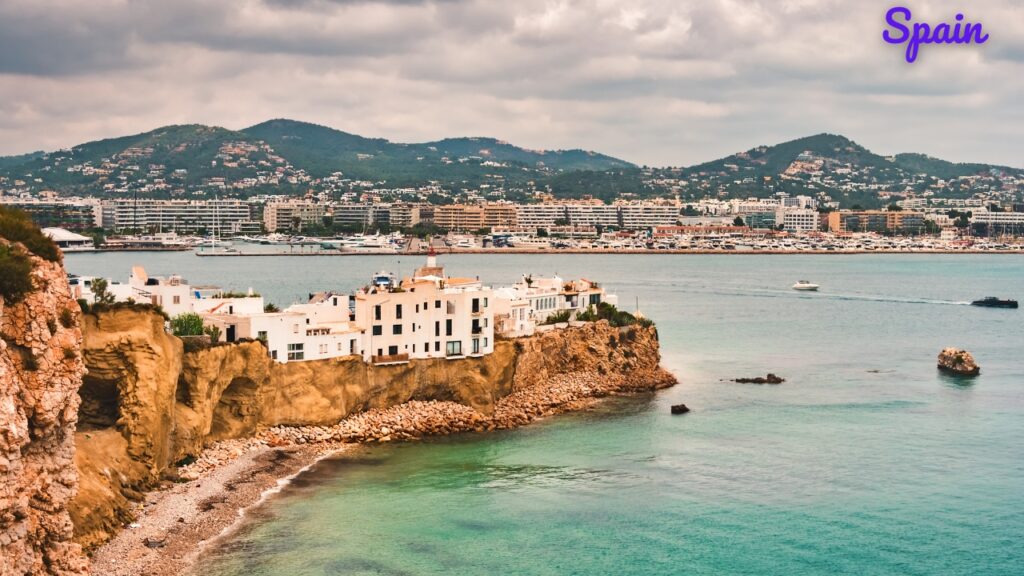
From most major cities in Europe and the eastern coast of the United States, daily non-stop flights to Madrid and Barcelona are available year round. In Spain the state run train system, Renfe, and an extensive bus system put even the smallest of villages within reach. Spain”s second largest city, Barcelona, remains relatively balmy year round and is the perfect place to take in the architecture of Antoni Gaudi”s unfinished masterpiece, the Sagrada Familia, or stroll through the psychedelic Parc Guell overlooking the city.
But if you decide to travel to Spain for the beaches you”re in luck, because from the Costa del Sol in the south, to the surfing areas around the town of San Sebastian in the north, Spain is circled with beautiful beaches. If it”s art and architecture that you crave, the best places to visit in Spain are Madrid, Barcelona, Valencia, Seville and Granada. Art buffs will love Madrid for its most famous Museum, the Museo del Prado. The Prado houses masterworks by Goya, Velasquez and El Greco and is a must on any traveler”s itinerary.
While Madrid is sweltering in the summer months, you can escape for a day trip north to Toledo, or spend an extended weekend touring the northern Basque region or hiking in the Pyrenees Mountains that form the border with France. To the South, the best of Spain sight seeing options are located in the region of Andalucia. Andulucia is rich in Moorish architecture–including the mythical Alhambra Palace–and is the birthplace of the colorful, passionate flamenco dance.
But modern Spain is much more than bullfights and flamenco dancing. For those that crave the nightlife, the best of Spain sight seeing is in The Balearic Islands. This archipelago of four major islands includes the trendiest of European resort destinations, Ibiza. So whether it”s masterpieces of art, white sand beaches, bullfights, flamenco dancing, or just sipping a nice Spanish wine at a sidewalk café, the best places to visit in Spain are within your reach.
History of Spain

The history of Spain is as rich, colorful, and diverse as any country in the world. The history of Spanish people is a mixture of the Roman, Moslem, Greek, Phoenician, and North African people that have, at one time or another throughout history, called the Iberian Peninsula home.
With access to both the Mediterranean Sea and the Atlantic Ocean, present-day Spain (which shares the Iberian Peninsula with Portugal) was a vital trading link and entry point into both northern Africa and Southern Europe. The history of Spain has been influenced tremendously by this cross current of ethnicities and religions.
A prime example of how the mixing of races and ideas has influenced the culture of Spain is the history of bullfighting in Spain. The Greeks and Phoenicians first brought bullfighting to the Iberian Peninsula; eventually the contests became fully developed and woven into the history of Spain. The history of bullfighting in Spain is a reflection of the different peoples who inhabited the Iberian Peninsula.
When the Moors from North Africa overran Andalusia around AD 711 they changed the rough form of bullfighting practiced by the Visigoths into a ritualistic event practiced on feast days. It was the Moors that first mounted trained horses (a tradition still practiced in modern bullfights) to confront and kill the bulls.
As the history of bullfighting in Spain progressed, men on foot aided the horsemen by positioning the bulls with skilled cape. These men grew more popular and garnered more attention from spectators and the modern bullfight or corrida began to take form. From the Ventas Plaza in Madrid, the largest bullfighting arena in the country, to a dusty swath of farm land in the most remote village, the culture of Spain today is linked to the modern bullfight.
The culture and history of Spain has been influenced not only by those whom conquered and fought for control of the Iberian Peninsula, but by the artists who flourished during the golden age (El Greco, Diego Velasquez) as well as the more recent of the twentieth-century masters (Pablo Picasso, Salvador Dali, Joan Miro).
In addition to the visual arts, the culture and history of Spain has many musical notes as well. In 1790, when a sixth string was added to the Moorish lute, the modern-day guitar was born. The present-day culture of Spain is also deeply rooted in the art of the dance. Gitanos, or gypsies, of the Andalucia region were the first to dance the passionate flamenco.
The modern culture of Spain draws heavily on its historical past, and from the biggest arenas and dance halls to the smallest farm yards and bars, the bullfight and the flamenco are still practiced with as much passion and immediacy as they were three hundred years ago.
Things to do in Spain
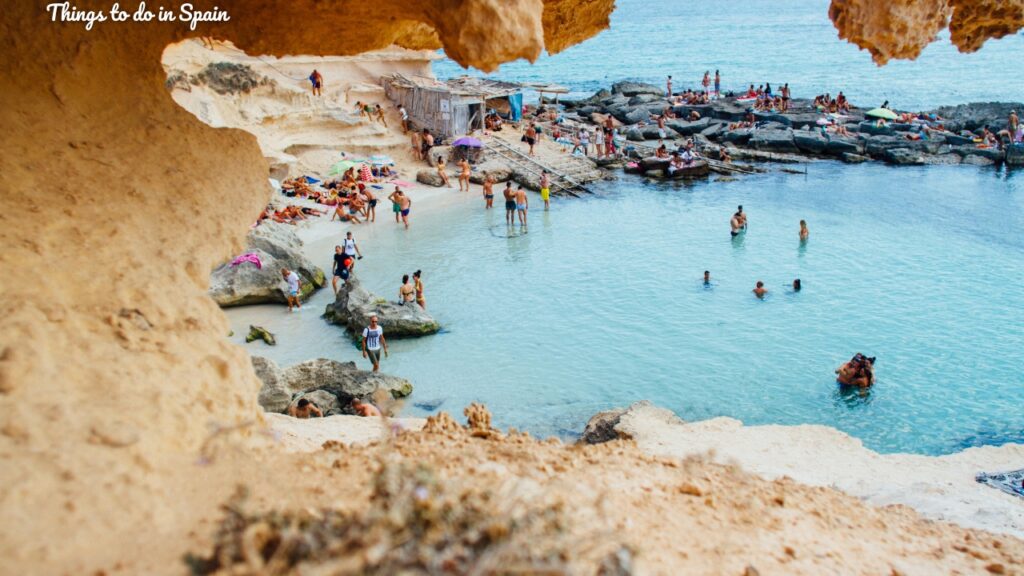
With so many Spain tourist attractions to chose from, this list could easily have been a top 40 countdown of the top destinations. Nevertheless, here are some of Destination360’s best suggestions for your next trip to the Iberian Peninsula
Run with the bulls in Pamplona
Channel you inner Hemingway during the Fiestas de San Fermin. In this, the most storied of Spain tourist attractions, six bulls are released into the narrow cobblestone streets of Pamplona each morning during the week of July 6 to July 14; in front of the bulls hundreds of locals and tourists from around the world test their daring by running in front of, next to (and sometimes under) the careening bulls. The whole event provides some of the best Spain sightseeing, and the entire week of festivities is the highlight of adventure tourism in Spain.
Party all night in Ibiza
Increasingly, tourism in Spain has become synonymous with the island of Ibiza, and for good reason—you come to Ibiza to party. Indulge your hedonistic side as you dance the night away in some of Europe’s hippest clubs. Take the raucous Disco Bus from club to club and dance and drink from Midnight to well-past 6 am in this most frantic of Spain attractions.
The Basque Country or Pais Vasco, is an area north of Madrid bounded by the Pyrenees Mountains and the Bay of Biscay. This unspoiled and easily traversed landscape is among the best tours to Spain for those seeking a quiet, quaint, old world getaway.
Visit the Prado
Madrid’s premier tourist attraction, and one of a handful of must-see Spain tourist attractions, the Museo del Prado houses one of the oldest and most prolific collections of art in the world.
Relax at Parc Guell
Laid out on hill with breathtaking views of Barcelona, the Parc Guell (Guell Park) was Antoni Gaudi’s most ambitious project after the Sagrada Familia church. Though commissioned as a private housing complex, only two houses were every built on the site. What remains, can only be described as the most psychedelic of Spain attractions. Twisting ceramic benches, a vast hall of pillars, giant lizards and sloping pathways all provide an amusement park feel.
Las Fallas in Valencia
Tours to Spain wouldn’t be complete without a trip to Valencia during the Fiesta de Las Fallas. From March 12 to 19 the city of Valencia is a pyro’s dream come true. From the minute you step off the train, firecrackers are popping at your feet, as giant Papier Mache effigies or fallas are paraded through the streets, judged, and awarded prizes. At night free firework shows light up the sky, while the days are filled with bullfights and paella eating on every street corner.
The Alhambra
Any trip to the south of Spain must include a stop in Granada and a tour of the Alhambra. Composed of three distinct groups of buildings on the Alhambra Hill, the complex is essentially a palace with extensive gardens surrounded by a fortress. This national monument is one the most mythical and romantic Spain attractions.
Ramble along Las Ramblas
Tourism in Spain is not all festivals and bullfights. Travelers looking for a low-key Spain sightseeing option can stroll along Barcelona’s main street: The Ramblas. This leafy avenue is lined with cafes and newspaper stalls and is a favorite stroll for locals and tourists alike.
Donana National Park
Tours to Spain are incomplete without a trip through this untracked National Park. One of the last areas of true wilderness in Europe, the Donana National Park in western Andalusia is filled with wetlands, 150 species of birds, wildlife in abundance and the endangered imperial eagle and lynx.
The Guggenheim in Bilbao
Described as the the greatest building of our time, this Frank Gehry-designed postmodernist museum attracted 1.4 million viewers in it first year alone. Once inside, art lovers are treated to a host of twentieth-century masterworks from artists including Picasso and Rothko.
Famous Landmarks in Spain
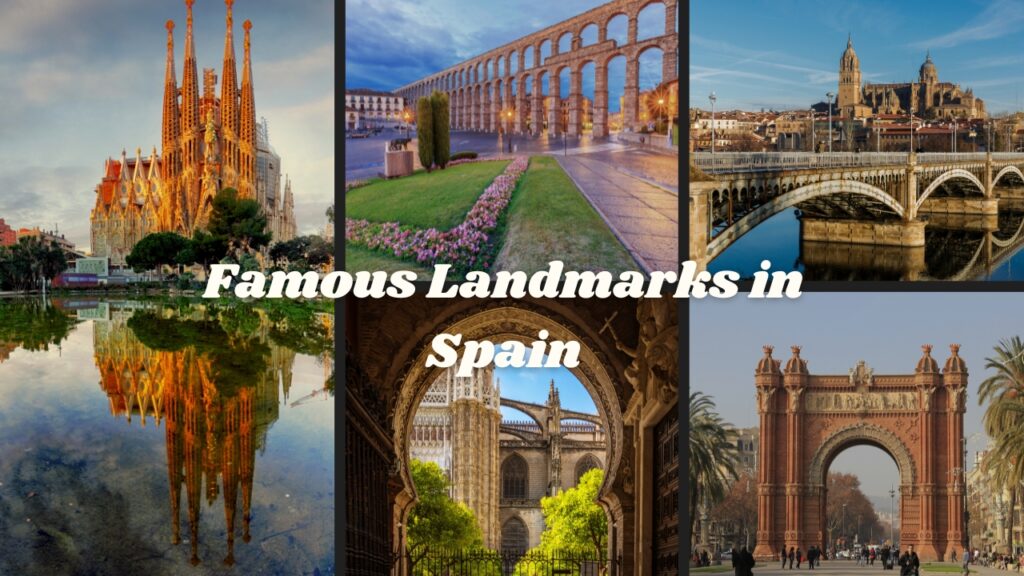
Famous landmarks abound in Spain and the rich Spainish history seems to be around every corner turned. It is this deep history that features a host of historic monuments telling the tale of Old World Spain. Coupled with Spain’s many other attributes, this destination is definitely a compelling one.
Famous tourist attractions in Spain can be cataloged into several different groups. Dining and shopping are huge draws for tourists from around the world. Spanish beaches are another magnetic draw appealing to sun lovers. Both skiing and golf offer even more to do, yet it is the many famous landmarks in Spain that have the strongest appeal.
The capital city of Madrid holds many of Spain’s most impressive and well-known attractions and landmarks. These range from the beautiful Palacio Real and its surrounding gardens to the amazing Prado Museum. Whether you are in town for the famous nightlife or want to take a tour of the local history, Madrid has attractions that will be interesting to any visitor.
Many of the world-famous cities in Spain are attractions in their own rights. Barcelona is an essential part of a Spanish vacation. The city offers great insight into Spain’s history through mysterious Gothic quarters, historic buildings, and monolithic churches. Architecture here highlights the work of Gaudi, the designer who installed La Sagrada Familia, Parc Guell, and many more architecturally fascinating buildings throughout the city.
Alhambra is another city that functions almost like an attraction. The Alhambra Palace, situated in Granada, is as important to Spain as the Great Wall is to China. It is the most important (and most visited) of all tourist attractions in Spain. Often called the Red Palace, this essential historic Mecca has evolved over time under both Muslim and Christian control. Alhambra is characterized by adjoining buildings added over centuries, each permeated with history, art, and culture, with roots leading back to the Arabic Nasrid empire, the last ruling Muslims in Spain.
Spain was once part of the Roman Empire and today has remnants of this impressive history. Exploring the Roman ruins in Merida might well be one of the only things to do in Merida, but the area is littered with fragments of history, offering a look at one of the many famous landmarks in Spain. The best time to visit is during the last months of summer when special live events happen throughout the amphitheater and theater.
Requisite tourist attractions in Spain include the Guggenheim in Bilbao, a building exhibiting the wildly fantastic imagination of architect Frank Gehry. The iconic structure has a truly magnificent ensemble of shapes canopied by unconventional titanium configurations passed through by a dissecting bridge.
Toledo, just south of Madrid, is a UNESCO World Heritage site and one of the most magnificent and famous landmarks in Spain. Gothic, Moorish, and Renaissance design intermingle creating a backdrop so enchanting it is immortalized in a renowned painting by El Greco.
More historical attractions include the Mezquita Cordoba, which belies its modern day purpose as a Catholic church with original architecture revealing its inception as short-lived Christian church and than a mosque filled with sky-high pillars and arches, most evidently of Arabic conception, that lead the way to the beautiful Catholic sanctuaries within. History at the Mezquita Cordoba backtracks to 796 AD and is closely tied to the Umayyad dynasty in Cordoba.
Religious history is also evident in the many attractions of Spain, which include the Seville Cathedral. The Seville Cathedral is easily the biggest of its kind, featuring a dense wall of holy saints encapsulated into a beautiful golden altar. Built in the sixteenth century in Seville, it houses the grave of Italian explorer Christopher Columbus.
Spain Events and Holidays

From the tiniest mountain village, to the main streets of Madrid, Spain is home to hundreds of exuberant festivals and holidays throughout the year. In Spain holidays are celebrated with a passion and dedication unique the world over. Holidays in Spain are driven by religious and cultural festivals, with each village and city having its own personal fiesta in addition to nationally recognized holidays.
With so many Spain holidays dotting the calendar, travelers can crowd into Madrids Puerta del Sol with the New Years masses and eat a single grape for each stroke of midnight, or engage in the worlds biggest food fight—an epic (and messy) tomato battle in the town of Bunol.
In Spain cheap holidays are harder to find in the summer months, but travelers who avoid the crowded costal regions can plan their itineraries around a few choice summer arts festivals in Spain. These include the summer-long Classical Theatre Festival of Greek and Roman dramas in Merida’s 2,000-year-old Roman theatre, or the International Music and Ballet Festival in the resort town of Santander.
Though spectacular events in Spain are a year-round affair, some of the biggest and most well-known holidays of Spain begin in the spring. From March 12-19 in Valencia, giant papier mache effigies or fallas are constructed by each neighborhood for the Fiestas de Las Fallas.
These fallas are then paraded around town, judged, and finally set afire. During the week, the streets of Valencia are a wonderfully chaotic mix of paella eating, afternoon bullfighting, and free nightly firework displays. Holidays in Spain are relatively easy to find, and Las Fallas is no exception; just make sure to book a hotel room in advance, or be prepared to sleep in the city parks with other die-hard revelers.
Travelers looking to combine two festivals of Spain in one trip, should head to Seville for seven days of feasting and religious processions that mark Semana Santa, or holy week, during the Easter Holiday. Stick around for another week, and you can see the horseback parades that make Sevilles Feria de Abril a photographers delight.
As spring gives way to summer, head to the cooler northern mountain region for the Fiesta de San Fermin (July 6-14). More popularly known as the running of the Bulls, and made famous in Ernest Hemingways novel, The Sun Also Rises, San Fermin is the most thrilling of all current events in Spain.
The majority of Spanish holidays, known as Feistas de Otono or Autumn Festivals, take place between September and November and are centered around harvest. Though on the whole quieter affairs, these fall festivals in Spain are no less interesting. One of the best is the Fiestas de Otono in the southwestern city of Jerez de la Frontera. Jerez is birthplace of sherry, and fall is the perfect time to sample the years vintage and take a tour of the sherry and brandy process.
The shear number of festivals spread throughout Spain during the entire year means that whichever season and destination you chose, you will find holidays in Spain to amaze and entertain you during your trip.
Beaches

Encircled by oceans, seas, straits, gulfs, and countless isolated bays, Spain is the perfect year-round retreat for anyone whose idea of a holiday includes lounging on a beach in Spain with a good book. For nearly 11 months of the year it is possible to visit the beaches in Spain and come away with a healthy tan and a relaxed attitude.
The most popular beaches in Spain are located between Malaga and Gibraltar on Spain’s Costa del Sol. Though because they offer relatively easy access via direct flights to Malaga, these beaches are often crowded and the fishing villages that once existed have been replaced by high-rise apartments.
The Costa del Sol is also the best place to find nude, otherwise known as naturist or clothing optional, beaches. The aptly named Costa Natura on the Costa del Sol was the first beach in Spain to be declared officially naturist in 1979. In addition to having one of the best public nude beaches in Spain, the Costa Natura is also a resort with 200 beachside apartments and full, clothing optional amenities.
But at beaches in Spain—as in many Mediterranean countries—clothing is really more of a suggestion than a requirement. And while most popular beaches in Spain have unwritten bathing suit rules, the isolated coves and mostly untracked strips of sand that line the coast are unofficial nude beaches in Spain, where the uninhibited can tan, swim, relax and really get in touch with nature.
A more secluded option in the south of Spain is the Costa Calida. The warm coast, as it is known, lies on either side of Cartagena and boasts some of the best sand beaches in Spain. On the Atlantic side of the Andalucian coast, travelers find the beaches west of Huelva a warm respite, and relatively un-crowded except in July and August.
Stretching from the French to Portuguese border, Spain”s northern coast, also known as the Basque coast, offers a welcome contrast to the crowded Costa del Sol. Known for its surfing, ease of access, and some of the cheapest beach villas Spain has to offer.
A drive or train ride from San Sebastian to Bilbao reveals many isolated beaches, rocky cliffs and post-card perfect fishing villages to explore. If you are staying close to San Sebastian you can locate some of the cheapest beach villas Spain offers, and rent a surfboard and make day trips to the beaches around Zumaia, Zarauz, or Hondarribia near the French border.
The best sand beaches in Spain are located away from the mainland itself in the Balearic Archipelago in the Mediterranean Sea. Although they’re known mostly for the nightlife found on Ibiza, the Balearic Islands offer some of the best sand beaches in Spain. Of the four main islands in the archipelago, Minorca and Formentera are less populated and still retain an air of adventure and seclusion.
In Minorca, the best option is to rent a jeep and go beach hopping. On the island”s northern coast, look for Arenal d”en Castell, and Arenal de Son Saura, two of the most secluded beaches in Spain. But if you are truly looking for deserted island type beaches, Formentera is the best option. Undeveloped and secluded the Playa de Mitjorn is arguably the most popular beach in Spain for those looking to shed their clothes and cares.
So whatever your holiday, Spain is a beach lovers paradise year round. Just make sure to book your hotel accommodations well in advance for the Costa del Sol, bring your wetsuit for an early morning surf along the northern coast, and pack a sense of adventure—and maybe some water—for a jeep tour of the remote Balearic Island beaches.
Castles in Spain

Castles in Spain contain some of the greatest national history. The many areas in Spain with castles can often be an indicator that the region was prime territory for enemy invasions or civil strife. Castles were originally constructed as a means of protection against these incidents. Many of the best Spanish castles were built and renovated throughout the Middle Ages when Muslim and Christian regions battled wildly for power.
The most faithful of noblemen to their Muslim and Christian kings were afforded a feif by their king, which means they were given a complete unit of realty including a village, huts, a castle or esteemed manor, fertile fields, pastures, and wooded areas for hunting. Each feif was situated on border lands ensuring each king’s most dedicated men always kept a watchful eye. The fiefs maintained and protected the greatest Spanish castles.
The border castles, once so well protected, were no longer a necessity after the Reconquista—a period of nearly eight centuries during which Iberia Peninsula Christians reclaimed lands from the Muslims. These castles in Spain became the residences of the aristocracy yet maintained their military edge for adversarial battles, which were still as commonplace as ever.
Throughout Spain’s Basque Country in the north, areas in Spain with castles are less obvious than regions in southern Spain. The reason behind this is that Basque Country’s noblemen were far less prosperous, building tower houses rather than large castles. On the other hand, the Muslims in Spain, who occupied the southern regions, were extremely wealthy and erected great palaces to show off their power and affluence. The Alhambra in Granada makes an excellent example of this fact. It is one of the best Spanish castles seen today.
The abounding Christian kingdoms established during the Middle Ages gained an aristocratic lifestyle and enjoyed a more wealthy status than ever before. It is during this period in which castles were built as residences rather than military strongholds.
An ideal example is the Alcazar de Segovia, which housed many of the Kings of Castile. Following the Conquest of Granada, all areas in Spain with castles were forced to give them up to the Crown.
Ensuing this period, some of the best castles in Spain were either destroyed or in a state of complete disrepair. Many more castles were decimated by kings enjoying fresh rule over new lands in an attempt to control peasant or noble revolts against them.
Today, hundreds of castles in Spain are beyond help, neglected for far too long. Sadly, there is neither the interest or the financial resources to restore all of these historical palaces. Some of the most notable castles include the Palacio Real in Madrid and Aranjuez’s castle of the same name as well as both alcazar’s in Segovia and Seville.
There are over 2,000 castles in Spain, with almost 500 in surprisingly good condition. Most of the best Spanish castles, however, remain in military or private hands. Those on vacations in Spain hoping to tour some of the most famous castles will be happy to note there are more than 100 open to the public.
Some of the most popular include Medina del Campo, Castillo de Coca, Castillo de Loarre, and Castillo de Gormaz, the oldest of all castles in Spain. The most abundant areas in Spain with castles include regions around Madrid, Salamanca, and Toledo. The southern region around Granada, Madrid, Almeria, and Cadiz is permeated with Spanish castles.
Mountains in Spain
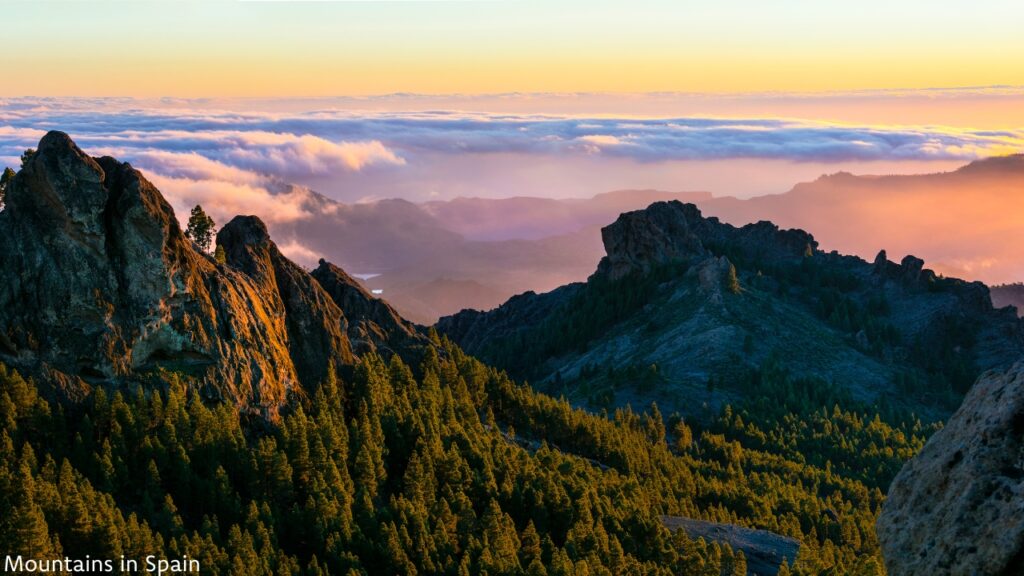
Mountains in Spain are of particular interest for skiing, hiking, and easy walking. When looking at a topographical map, it is evident that a majority of Spain’s land mass is dominated by mountain ranges in Spain. Across the country there are five major mountain ranges in Spain including Cordillera Cantabrica, Sistema Central, the Pyrenees, Sierra Morena, and Cordillera Subbetica.
The highest mountain in Spain is located in the Canary Islands on Mount Tenerife while on the mainland it is Mulhacen near Granada at 11,420 feet high. Another of the main mountains in Spain are the Pyrenees, bordering France, where Pico de Aneto takes third place as the highest mountain in Spain at more than 11,169 feet high.
The rugged mountain terrain of the Canary Islands mingles with fertile fields and valleys creating some of the most beautiful scenery in Spain. The Balearic Islands are similar in composition and feature the same topographical highlights, one of the main attractions when visiting. The mountain ranges of Spain all present many unique natural attributes such as a wide diversity of vegetation not seen at lower altitudes, groves of stately oak trees along the foothills, and a large population of chestnut and beech trees.
Mountain tours are extremely popular during Spanish vacations and can be easily arranged through vacation packages or on their own. Biking and walking trips are popular throughout the Andalucia Sierra Nevada mountains in Spain and lodging is easily found dotting many of the ranges. From easy walking and hiking excursions and advanced level paths, every ability can enjoy a mountain holiday. For the more adventurous, top skiing destinations in Spain present an up-close look at the some of the highest mountain ranges in Spain.
The Pyrenees Mountains in Spain are a hotspot for tourism and there is a wide array of cottages, mountain villas, and hotels to choose between. Self-catering accommodation is popular, and is akin to renting a furnished home with many convenient amenities, but generally without additional services. Usually self-catering accommodation is offered with a weekly rate and can sometimes include rental transportation, bicycles, and other equipment. From simple mountain cottages to luxury homes, a wide variety of lodging is located in the mountains in Spain.
The Sierra Nevada is another of the famous mountain ranges in Spain with Granada, Almeria, and Malaga at its foothills. The Sierra Nevada is home to the highest mountain in Spain, called Mulhacen, where thousands of tourists set off on both summer and winter ascents. Ascents can be a few hours long, or continue for days. Activities on these mountains include easy walking, adventurous hiking, and skiing from December through May.
Visitors who want to avoid high altitudes can enjoy trekking in the lower regions of the Sierra, through the valleys and foothills around Alpujarra where Spain’s famous White Villages are tucked into the landscape.
Mountain holidays are wonderful way to explore Spain’s most fascinating natural attribute. The fresh air can be a welcome change to the heat throughout Barcelona and Madrid during the summer months. A large variety of equipment can be rented for a mountain holiday including skis, hiking boots, hiking poles, harnesses, helmets, rain jackets, and much more.
From relaxing bike trips through Basque Country in the Pyrenees to arduous skiing sessions on the Sierra Nevada, mountain ranges in Spain offer a host of fun pursuits, fantastic scenery, and sky-high accommodations.
Historical Sites in Spain
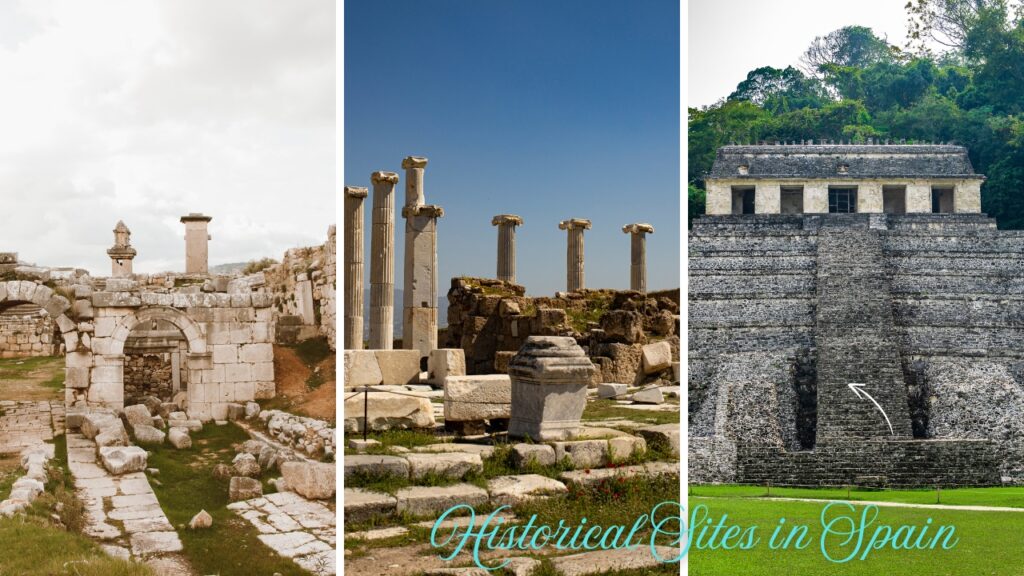
Historical sites in Spain can be found everywhere in the country. There are more than 40 Spain UNESCO World Heritage Sites in the country, and almost all these have historical significance. Some of these, like the 17 caves of Altamira in northern Spain with their Paleolithic cave art are ancient, having been created between 11,000 and 35,000 years BCE.
There are also late prehistoric rock art sites along the Mediterranean seaboard. The archaeological site of Atapuerca on the northern coast of the country are even more ancient, with fossils recovered that date more than a million years ago. Most of the country’s historical sites are much more modern, relatively speaking, beginning with the Tower of Hercules, a Greco-Roman lighthouse that has guided ships on the northwestern coast since about 100 years after the death of Christ. This is the only ancient Greco-Roman lighthouse to have retained a good portion of its structural integrity and to have a continuous history as a functioning lighthouse.
Serra de Tramuntana
Some of the Spain UNESCO Sites are cultural, such as the cultural landscapes of Serra de Tramuntana. This is a harsh mountain range along the northwestern coast of the island of Mallorca. Thousands of years of agriculture in this unforgiving landscape has left an extensive network of terraces, interconnected irrigation waterworks, aqueducts, and water mills.
Alhambra
One of the most iconic historical sites in Spain is the Alhambra, located in the southern city of Granada, which together with the Albaycin and Generalife Gardens atop adjacent hills comprise a UNESCO World Heritage Site. The Albaycin is a residential district with extraordinary Moorish architecture, and the magnificent Alhambra is a beautiful royal residence once occupied by the emirs who ruled Spain. Its serene beauty rivals that of the Taj Mahal in Agra, India.
Santiago de Compostela
The Old Town of this celebrated pilgrimage site commemorates the struggle of Spanish Christians against Islam during the Moorish period. It was destroyed by the Muslims in the tenth century and rebuilt from the ground up during the next century. Buildings in the district include baroque, Gothic, and Romanesque architecture grouped around the magnificent St. James Cathedral.
Santiago de Compostela is only one of the historical sites in Spain to encompass an entire city district. Other Spain UNESCO Sites that include entire districts are the city of Toledo made famous by the Crete artist El Greco, the Old Town of Avila, the Old Town of Segovia, the Old Town of Caceres, and the Old City of Salamanca.
Las Medulas
This is a remarkable landscape created by a unique first century AD Roman gold mining technique called “Ruina Montium” that used water hydraulically to undermine mountains. Large portions of the seven or more ancient Roman aqueducts, which can be found near the town of Ponferrada, remain intact today. As with strip mining in the United States and elsewhere, the Romans left behind a devastated landscape that today is extraordinarily beautiful and a valuable chronicle of the period.
Vall de Boi
The largest concentration of Romanesque art and architecture is to be found in this valley of northern Spain near the border with France. There are nine exceptionally well-preserved churches from the period of Catalonia that flourished in the twelfth century. This ensemble of lovely churches comprises one of the Spain UNESCO Sites because of the way it preserves the cultural landscape of that period.
Seville Cathedral
Together, the three buildings—the Seville Cathedral, Alcazar, and Archivo de Indias—form one of the Spain UNESCO Sites of monumental significance. The cathedral in Seville is the largest Gothic building in Europe and houses the tomb of Christopher Columbus. The elegant minaret on the Alcazar is a masterpiece of Moorish Almhad architecture, and the Archivo de Indias is the repository of thousands of historical documents from the New World.
The Works of Antoni Gaudi
Some of the most modern of the historical sites in Spain are also UNESCO World Heritage Sites. There are seven properties built by the architect Gaudi (who died in 1926) around the city of Barcelona. These buildings, which include Casa Batllo and La Pedrera (pictured), are of eclectic design and superb examples of the architectural technology that blossomed during the turn of the twentieth century. The still uncompleted La Sagrada Familia Cathedral is a hymn to the architect’s brilliance and faith.
Hospital de Sant Pau
As with the Gaudi structures, this is one of the historical sites in Spain that is quite modern. It was built in Barcelona between 1901 and 1930 by the modernist architect Montaner, and functioned as a hospital until 2009. Now it is refurbished as a cultural center and museum.
Spain Transportation

As you would expect with a country size of Spain, travel around the country is an important concern for any tourist. Rest assured car rental in spain is hassle-free and allows for an independent travel itinerary. In addition to a well developed highway system, trains in Spain range from the super fast AVE to the meandering regionales offer a scenic way to view the countryside.
Though more expensive due to petrol prices, care rental in Spain allows the intrepid tourist to move about the Spanish countryside at his/her own pace. Car rental in Malaga, for instance, is one option that will allow you to travel up and down the Costa del Sol in search of the best beaches. Car rental in Malaga varies from hole-in-the-wall, local companies, who may offer better prices, but questionable automobiles, to international companies like Hertz, Avis and Europcar
If you are wary of car rentals in Spain, an easy way to tour the countryside and visit Spain is via the public bus system. Though quality varies, and services are drastically reduced on weekends, busses provide a reliable and comfortable way to see some of the villages not accessible by the regular trains in Spain. One thing to remember is that some towns and villages don’t have a main bus terminal, so busses can leave from many destinations.
If rental cars in Spain scare you, and busses are too slow, the state-run train system, Renfe, is a modern and efficient way to move around the country. Trains in Spain almost always require reservations, and unlike other European countries, passengers are often not allowed onto their specific departure platform without first presenting a ticket. Between the super-fast (and expensive) AVE, and the puttering regionales, tourists will find a perfect mixture of comfort and speed on the Talgo and Trenhotel.
Americans or Canadians who are planning to visit Spain for more than a week can purchase a North American Spain Flexipass. Available in both first and second class versions, these passes allow for between three and ten days of rail travel in any two month period.
Airlines to Spain
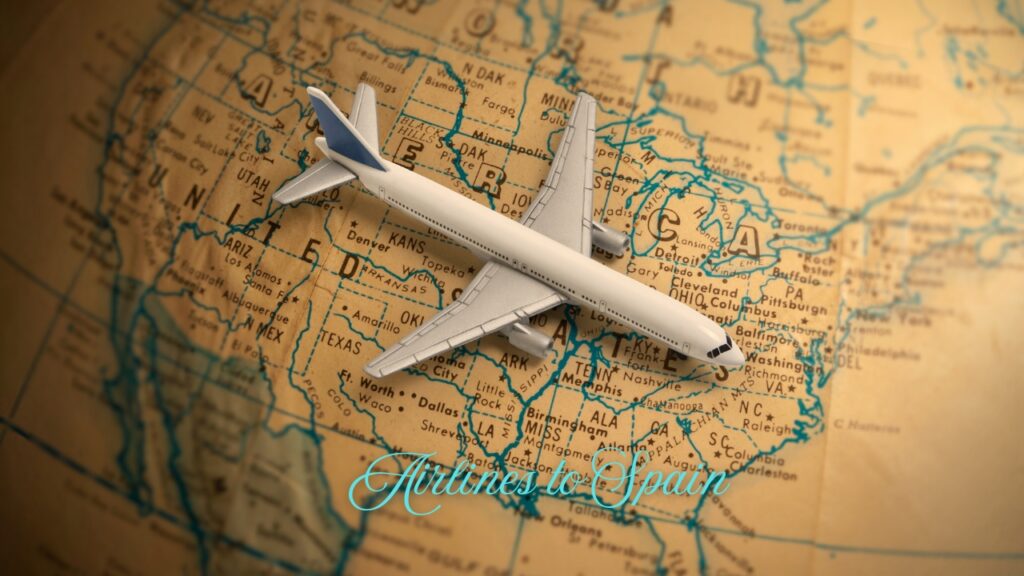
Given its size and location, flights to Spain are frequent and, in recent years, cheap flights to Spain from Europe are more readily available due to an increase in low cost carriers. It is important to understand that tickets to Spain are best purchased during the off-season months. The off-season generally runs from October to May, with cheap flights to Spain available from October to November and January to April.
Three major Spanish carriers offer daily flights to Spain from the United States. Air Europa offers daily, non-stop service to Madrid from New York/Newark’s Liberty Airport. Air Plus Comet has daily, nonstop service from New York’s JFK Airport to Madrid. Iberia offers the most daily flights to Spain, with non-stop service from Miami, Chicago and New York to Madrid. Additionally, seasonal daily, non-stops are available to Barcelona are available during the spring festival season and the tourist season.
Airline trips to Spain are more frequent from European locations, with daily flights arriving in Madrid, Barcelona and leaving most major cities in the EU arriving in Madrid, Barcelona, Valencia, and other smaller cities in the south like Granada, and Seville.
Fares to Spain vary widely, but the thrifty traveler will remember that round-trip travel tickets purchased in advance are the cheapest way to visit the Iberian peninsula. Remember, however, that most cheap tickets to Spain, like cheap tickets anywhere, are non-refundable. Another option for cheap fares to Spain is to purchase a holiday package deal. While some mass-market deals target only the touristy coastal areas, this doesn’t mean you have to stick around your hotel. Sometimes the package tickets to Spain are worth it, just for the reduced airfare.
Both Iberia and the somewhat cheaper Aviaco offer the most extensive point-to-point flights within Spain. As you would expect flights within Spain are more expensive than rail or bus travel, with the exception of travel to the Balearic Islands, in which case flights reserved in advance are only slightly more expensive than ferry service.

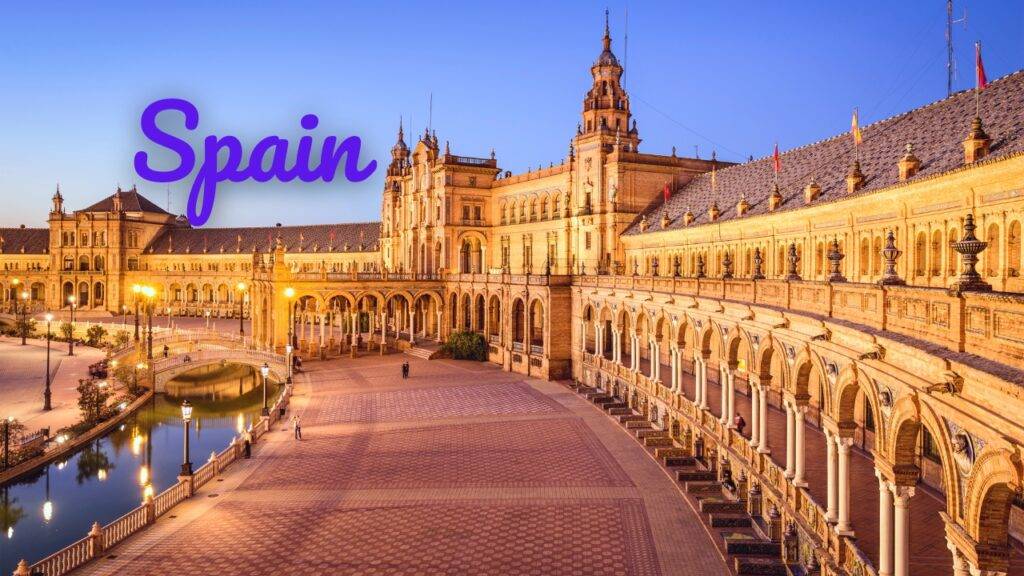

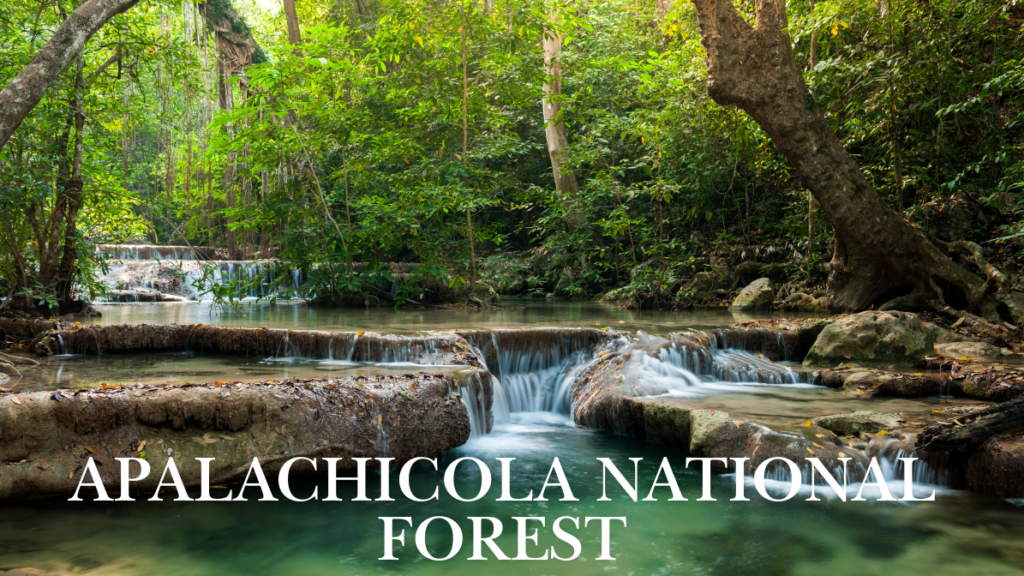
Fun Sun – ваш проводник по Турции из Москвы, все красоты.
Туроператор Fun Sun туры в Турции из Москвы [url=bluebirdtravel.ru]bluebirdtravel.ru[/url] .